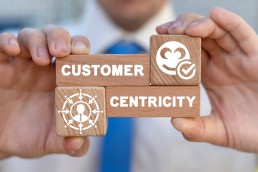Framing the requirements for developing a customer-centric approach and service model
The issue
- With a re-focusing of the organization on energy transition and a strategic objective to grow B2C Mobility and Convenience revenue streams, the current, largely B2B, customer care service model was increasingly being asked to meet needs beyond core capabilities and capacity, putting a strain on service and cost to serve
- With limitations on internal capability, business units have chosen to outsource services, leading to a proliferation of suppliers, models and customer experiences
- No cohesive corporate narrative of the customer promise exists and the internal focus was on fixing service failings to reduce the noise within the organisation
- The need for a future-proof operating model that is aligned to the projected steep growth in the B2C customer base was recognized
- Gaining an appreciation of leading external practices in customer care delivery was considered an essential input to framing the right future state operating model
Solution
- Current state assessment of customer care and customer centricity capabilities against a set of standard dimensions to establish current maturity and points of commonality or difference across business groups
- Established current state maturity of each business against an industry reference benchmark
- Developed design criteria to frame a future operating model and as a reference against which to benchmark external leading practices
- Undertook competitor and cross-sector benchmarking to identify areas of Customer Care differentiation, including desktop research, expert input and interviews with Customer leaders within major organisations (both B2B and B2C).
- Defined the priority levers to drive improved customer-centricity and articulated the linkages between the dimensions
- Developed an initial roadmap to outline how the Customer Care capability should evolve

The results
- Mobilised the senior stakeholders to want to move beyond fixing performance failings in Customer Care to evolving a business-wide Customer-centric operating model
- Delivered a customer centric maturity assessment across three representative businesses against a series of capability levers
- Multi-industry, international benchmarking exercise, highlighting customer-centricity maturity and leading practices
- Identification of priority levers to increase customer centricity maturity and approach options to achieve a viable system model
- Development of a roadmap to move beyond operational fixes to a strategically customer centric approach






CONTACT US TO FIND OUT HOW WE CAN HELP
Designing and deciding digital CX route-map & the priority omnichannel service investment to realise it
The issue
-
Having delivered the ‘brilliant basics’ part of a CX transformation programme, the bank needed to define a digital CX design to deliver a signature, differentiating experience
-
A pressure point was that customers’ expectations of doing their banking anywhere/ anytime/on any device were growing, and the ground had been lost on this to digital challenger banks
-
The bank was also in sharp cost control mode so it was critical that digital CX investment choices were well evidenced, validated and focussed
-
We had to answer the question: where and how to prioritise omnichannel service investment to deliver a competitive digital CX?
-
With many competing candidates for digitising customer service across the existing product portfolio, we had to be clear about what omnichannel improvements would realise greatest value from a CX and commercial perspective
What we did
-
Reviewed draft digital strategy and developed investment prioritisation criteria to focus CX and omnichannel service design choices
-
Defined design principles to guide the development of Omnichannel capability
-
Competitor and cross-sector benchmarking to identify key areas of digital CX differentiation
-
Evaluated and ranked CX/service design options against agreed prioritisation criteria and ability to leverage existing IT capability and technology roadmap
-
Flesh-out of to-be CX/service design with benefit cases supporting the investment priorities identified
-
Produced and validated a sequenced digital CX/omnichannel implementation route map

The results
-
Delivered new digital CX/omnichannel design with 10 key touchpoint changes, each with benefits ranging from £3.5M to £9M annually in a fully realised state
-
Pragmatic, phased change route map adopted, which drove early cost savings and new customer acquisition uplift by addressing highest priority CX pain points, allowing subsidisation of next phases
-
80% of the technology capabilities required to deliver the route map were covered by leverage of existing or planned future (and already budgeted) technology assets and upgrades













